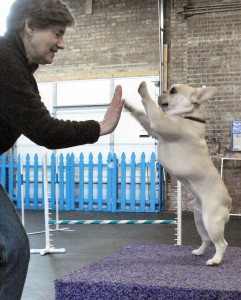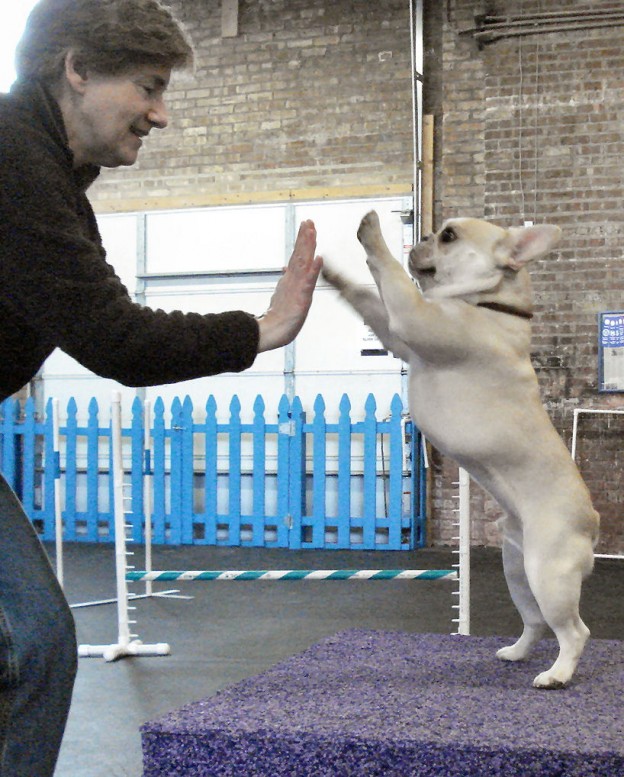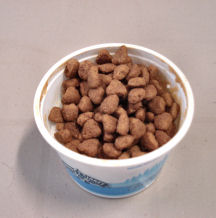Congratulations! You’re a dog trainer!
It’s true. The reality is – everyone who owns a dog is a dog trainer. Dog training is all day, every day. Dogs learn from everything we say, do, and are.
The tricky part is being aware of what we’re training!
Our new book, 2-Minute Trainer Book 1 – Clicker & Place, will get you started on the most fun you’ve ever had playing with your dog.
Expectation
People say their dogs “know” when they’ve done something naughty because the dog hides or has a hangdog (sorry, we couldn’t help it) expression.
Reality
The dog knows yelling will happen soon. The dog doesn’t “know” not to do it – the dog knows not to be around when you find it.
To a dog, the answer is not “don’t do it.” It’s “make sure she doesn’t find it.” It’s why they “hide” their accidents. And why, when you’re in the process of housebreaking, you should be hot on the heels of any dog who decides to leave the room!
Expectation
Dog training takes a long time, isn’t much fun, and you need an expert to achieve anything.
Reality
Dog training only takes a couple minutes at a time, is a fun game you play with your dog, and anyone can do it.
It does require patience, but that’s why we do just little bits at a time. The time we spend with our dogs, considering everything else going on in life, can’t be full of tension and stress. Everyone who has a dog should be able to spend just 2 minutes playing a training game.
Double Reality
if you don’t have two minutes to spend with your dog on a regular basis, you probably shouldn’t have a dog.
Expectation
We can’t do this. My dog is an obedience school drop-out.
Reality
Your dog was probably bored stiff by the glacial pace, boring demeanor, and rote repetition of the exercises in the obedience class.
It’s a fact that most small dogs are descended from animals whose original jobs were getting rid of vermin. That means they were bred to work independently, use their brains, and outsmart the competition. Furthermore, when we say little dogs are smart, we mean it. They don’t have the “obeying” kind of smart, they have the “problem solving, thinking” kind of smart.
Expectation
Dog training isn’t fun.
Reality
If it’s not fun, you’re doing it wrong.
2-minute training is fast-paced. It works best if you go into it with a smile on your face, good “cookies” close at hand, and use that higher-pitched, excited voice you would with a toddler. Moreover, when you ask “Wanna go train?” your dog should be just as excited as if you asked “Wanna go for a walk?” or if you grabbed your keys and asked “Wanna go for a ride?”
Getting completely real
To summarize, the reality of 2-Minute Training is that you can:
Expect to have fun. Expect to be sorry when time’s up. Expect you and your dog to excel.
Expect to be proud – of yourself and your dog.












